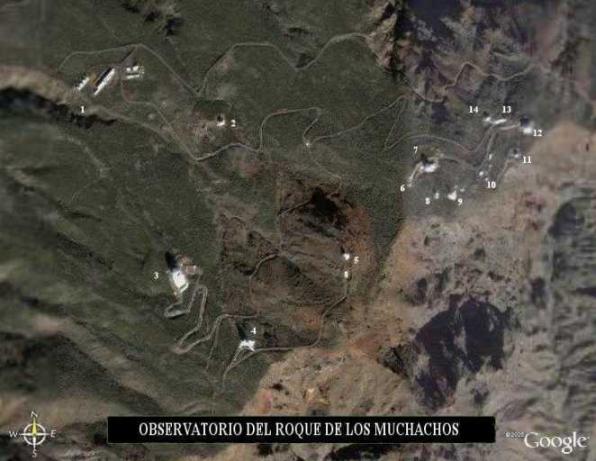
KEY TO INSTALLATIONS
- IAC Residencia
- 17m MAGIC
- 10.4m GTC
- 3.6m TNG
- 2.5m NOT
- 18cm CMT
- 4.2m WHT
- 45cm DOT
- 1m SST
- Super WASP
- 1m JKT
- 2.5m INT
- 1.2m MERCATOR
- 2m LIVERPOOL
The Isaac Newton Group of Telescopes forms but one part of the Observatorio del Roque de Los Muchachos (ORM). So named after a volcanic rock formation on the highest point of La Palma. The ORM is multi-national observatory with several European countries participating. These being: Belgium, Germany, Italy, The Netherlands, Spain, the United Kingdom and the Nordic countries of Sweden, Norway, Denmark, Finland and Iceland. The site is administered by the Instituto de Astrofísica de Canarias (IAC). The installations at the ORM currently being:
Conventional Telescopes
- The Isaac Newton Group of Telescopes (ING)
- 1.2m Mercator Telescope
- 2m Liverpool Telescope (LT)
- 2.5m Nordic Optical Telescope (NOT)
- 3.6m Telescopio Nazionale Galileo (TNG)
- 10.4m Gran Telescopio Canarias (GTC)
Solar Telescopes
Specialised Telescopes
- 17m Major Atmospheric Gamma Imaging Cherenkov Telescope (MAGIC)
- 18cm Carlsberg Meridian Telescope (CMT)
- Super WASP (Wide Angle Search for Planets)
A TOUR AROUND THE ORM
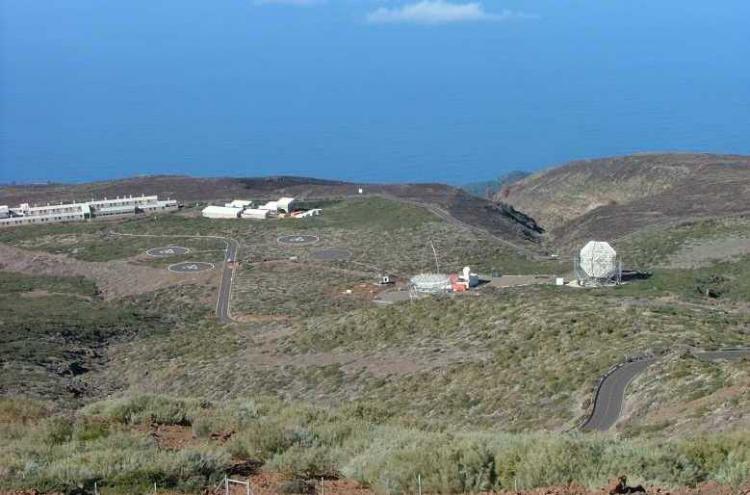
View to the north showing the Residencia and the MAGIC telescopes
The helicopter pads were built for the Royal Inauguration of the observatory on the 29th June 1985 and are still used occasionally by visiting dignitaries or the emergency services. The residencia provides accommodation for visiting astronomers and night staff as well as being the refectory for the site.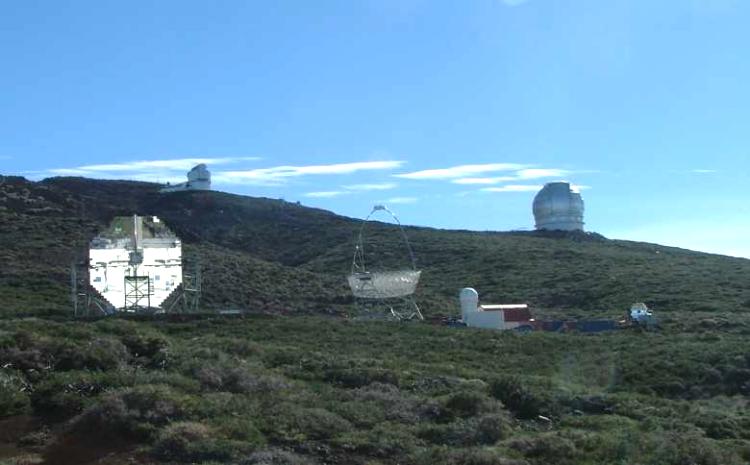
View from the road just before entering the site showing the MAGIC, GranTecan and TNG installations
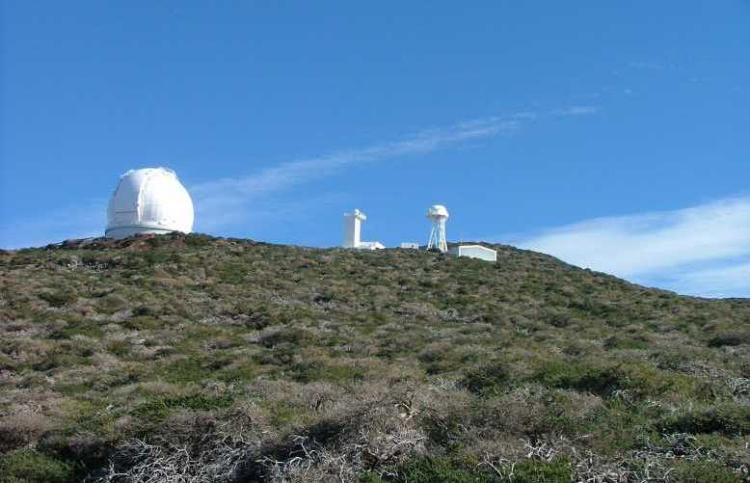
William Herschel dome, the Swedish and Dutch Open solar telescopes and the enclosure for the Carlsberg Meridian Telescope
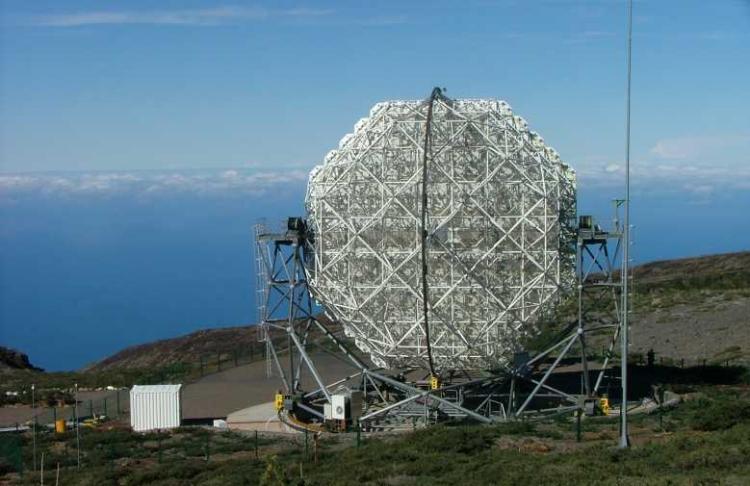
MAGIC I showing the complex lattice work which supports the segmented mirrors
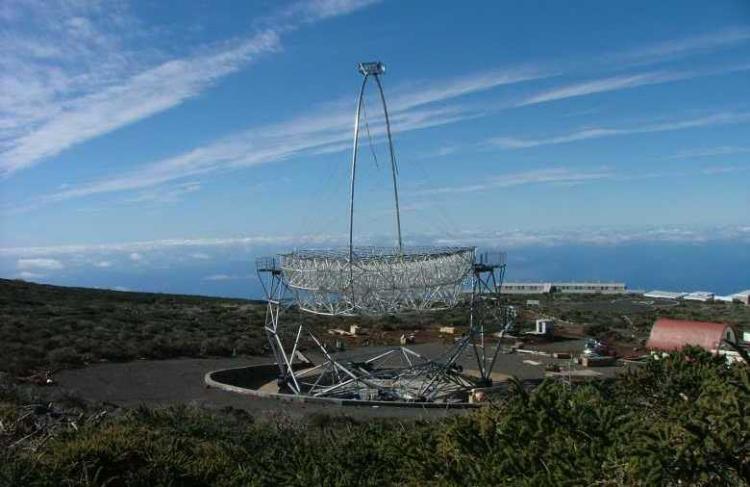
MAGIC II nearing completion (27th Dec 2005)
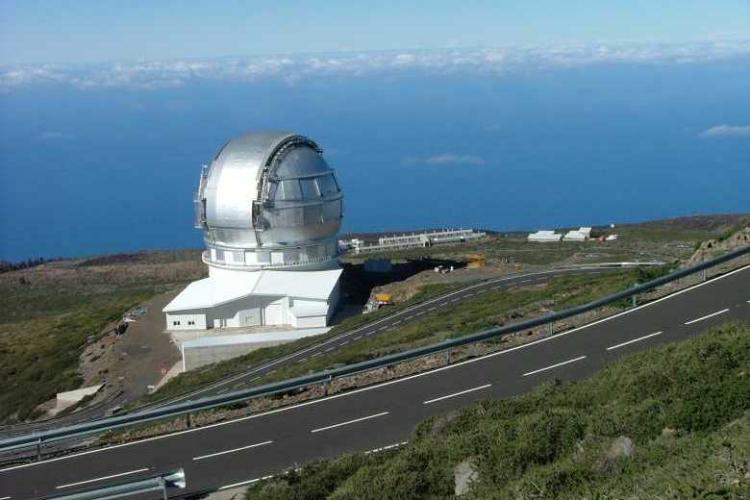
The dome and buildings of the 10.4m Gran Telescopio Canarias (GranTeCan)
This telescope is nearing completion and expected to see First Light in 2006. Until more grandiose projects are built, this telescope will become the largest 'single' telescope in the world. Although based on the 10m 36 segmented mirror Keck design, the aperture is slightly larger. Progress of the internal construction can be seen by clicking on this WEBCAM link.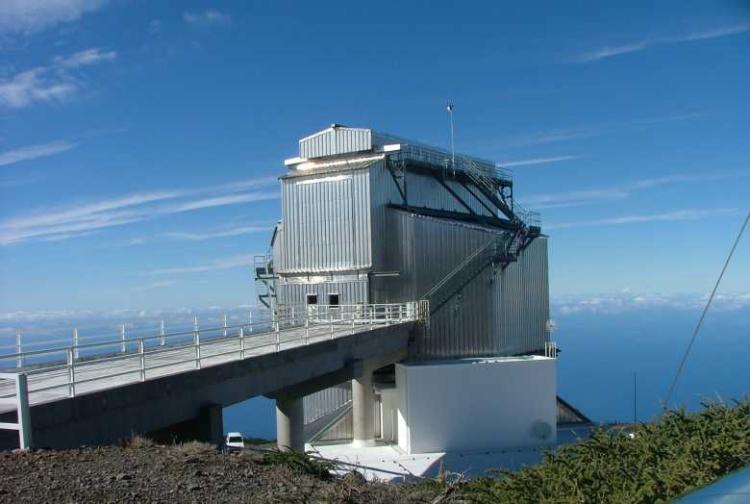
The 3.6m Telescopio Nazionale Galileo (TNG)
The enclosure is designed to optimise the air flow around the telescope to effectively reduce the 'dome seeing' and improve image quality. This telescope with its active primary mirror support system is very impressive. The Nasmyth image derotators mounted on the fork look into well ventilated observing halls at each side of the telescope. The various imaging cameras and spectrographic instruments are permanently attached to the rotators so eliminating the need for instrument changes.
The 2.5m Nordic Optical Telescope (NOT)
A unique feature is that the dome is fixed and entire structure rotates. A visiting NOT astronomer once told me he would never know where the entrance/exit would end up after a nights observing and was thankful for the walkway!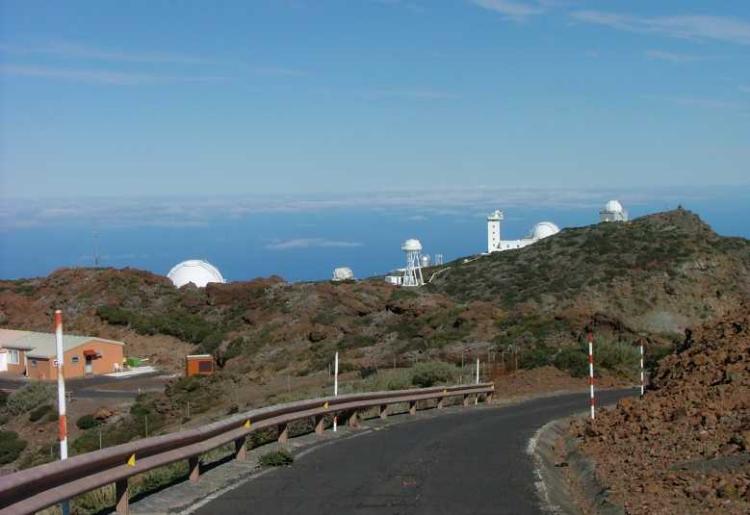
The domes of ING telescopes, the solar towers and the Liverpool and Mercator telescopes

The Liverpool Telescope
The clam shell enclosure of the Liverpool Telescope provides an ideal housing. When open, the telescope is totally exposed and free from the effects of air currents which circulate in conventional domes and degrade image quality. The Liverpool telescope works remotely with the telescope and data acquisition operations controlled via the Internet.
The 1.2m Mercator (Belgium) and 2m Liverpool (UK) telescopes as seen from the roof of the INT

The 'Roll off Shed' enclosure of Super WASP with the JKT above
This is one of the latest installations at the ORM and came in operation in April 2004. The instrument consists of a high quality equatorial mount with 8 CCD cameras (using 2k square chips) each fitted with a Canon 200mm f/1.8 lens. It can image very large blocks of the sky compared to a conventional telescope and the data taken each night is huge.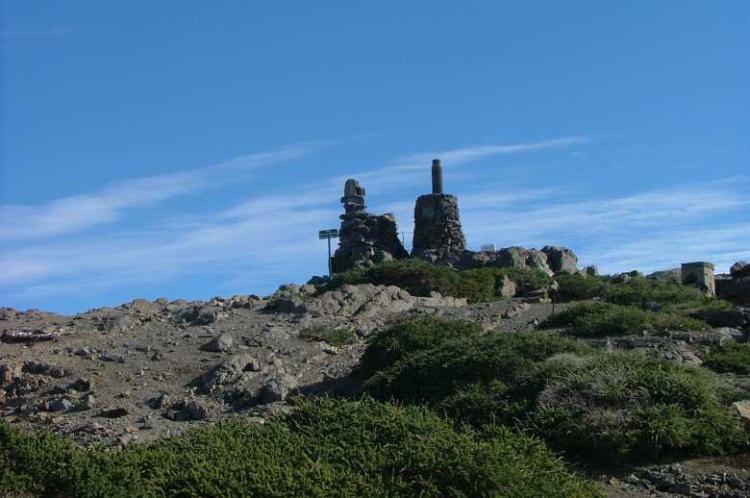
Site of the Polaris Trail Telescope (1972)
The structure made of cemented local rocks and blocks (to the left of the geographic trig point) was made to support a special telescope pointed to the North Star (Polaris) and used to determine the observing conditions of the site. Based on the observations, the island La Palma would eventually be chosen to build what was then to be called 'The Northern Hemisphere Observatory'. Click here for more information.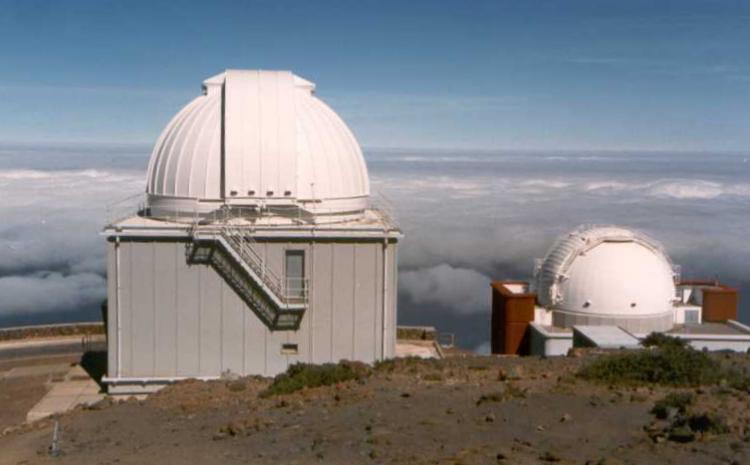
The JKT and INT buildings high above a sea of cloud
A photo from 1986 and was my first taken at the observatory. Seeing how perfect the sky is at this altitude, its hardly surprising the RGO decided to move their operations from Herstmonceux to La Palma!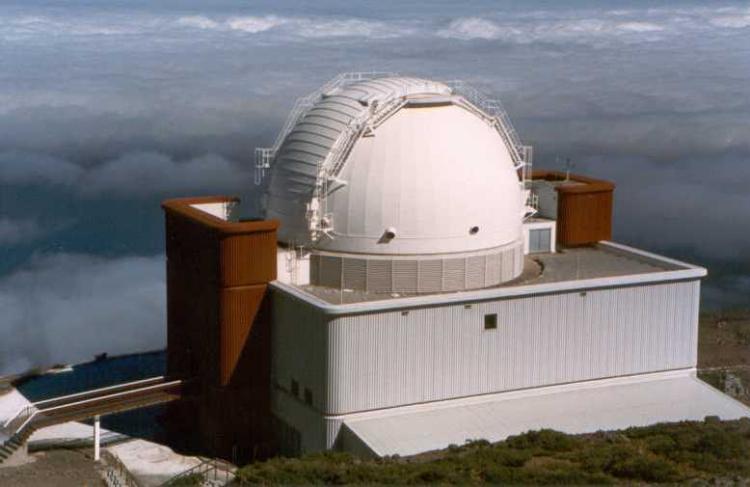
The Isaac Newton Telescope building in 1986
In those days, many RGO staff were on tours of duty for a few years. To make us feel not quite so home sick, a bus stop sign (think it was 'borrowed' from from Hastings!) was fixed on the east side of the building where the fleet cars pulled up on arrival... A nice touch! I too expected to return to RGO after my 3 year tour in 1989, but I never did.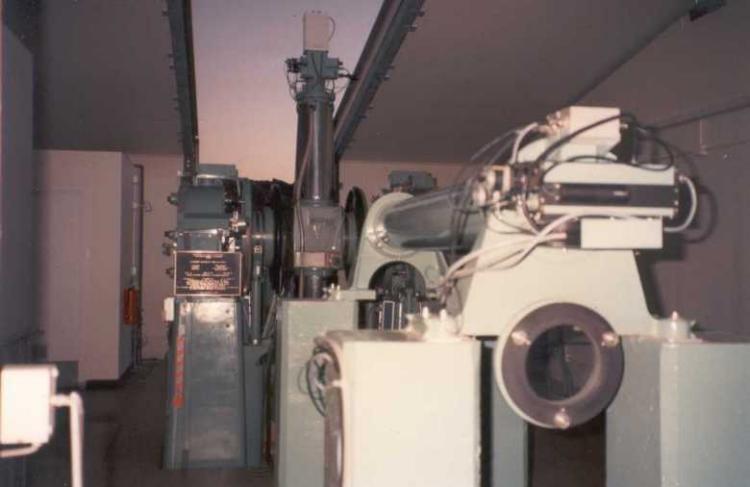
The Carlsberg Meridian Telescope (CMT)
This is the oldest telescope at the ORM and was made by Grubb Parsons in 1952. It was originally used at the Copenhagen University Observatory (CUO) from 1964 to 1976, but was then converted for automatic observations and renamed the Carlsberg Automatic Meridian Circle when it came into operation on La Palma in 1984. Carlsberg of "Probably the Best Lager in the World" fame were one of the main sponsors at the time, hence the name. It has gone through many upgrades over the years and since 1997 works remotely.I took this photo (in 1986) at twilight when the building had just opened up and the telescope was doing its first calibration run. A precision divided glass setting circle read by (I think) six optical reading heads around its circumference determines the angular position of the telescope. The readings from the heads are averaged out and that value taken at the time of observation.
The telescope is shown observing the nadir using a light source reflected back from a mercury pool situated in a floor well between the piers. This calibrates the telescope in the vertical plane. For horizontal calibration, collimator tubes utilising a light source are used. The north collimator tube can seen in the foreground. From what I recall, the CMT does these calibration checks at intervals throughout the night after its completed a number of observations.

